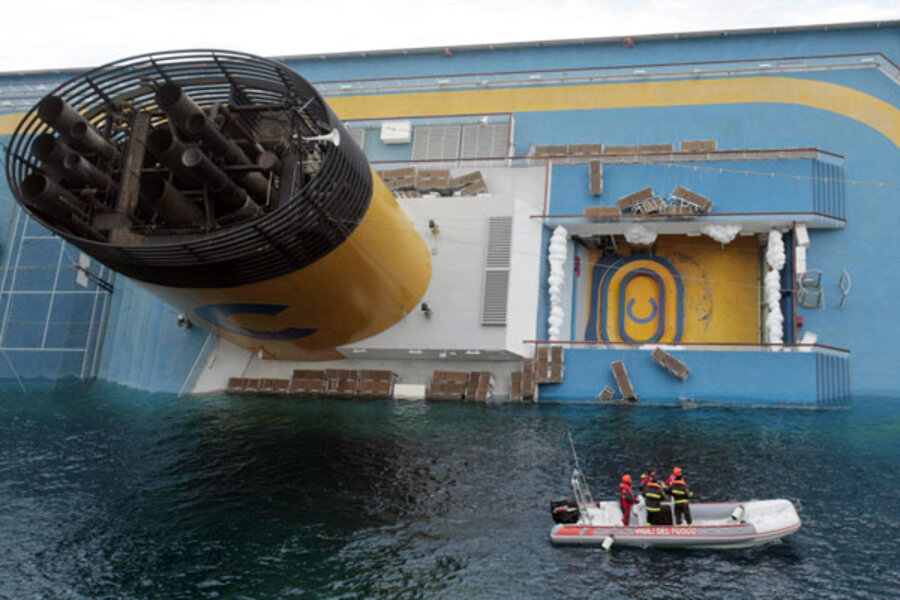In 2007 another cruise ship ran aground off Santorini Island in the Greek isles. The vessel went close to the island’s picturesque cliffs to give the passengers a good view, but struck rocks and sank.
“Shoulda, coulda, woulda,” says Mr. Loh. “You go close but you don’t go too close."
Stopping a boat or quickly changing course to avoid an immediate collision threat is not a realistic maneuver for most cruise boats, says Mr. Loh. “You have to understand when you’re at sea and in a large vessel like this, the bridge is extremely high up in the air, and you can’t see the entire vessel or over the side of the vessel … and you can’t stop on a dime”
“In order for you to avoid [a collision] requires a lot of prior planning to figure out where you are at any particular time,” Loh says. “If you’re really close [to land] you have to be in a position that no matter how much momentum you have at that time the forces of inertia could not possibly put you in a position to rub up against a large rock.
“Which means you have to be fairly far away to avoid [collision],” he says citing a full boat length, at least, from any known hazard.
 Mark Sappenfield
Mark Sappenfield
Dear Reader,
About a year ago, I happened upon this statement about the Monitor in the Harvard Business Review – under the charming heading of “do things that don’t interest you”:
“Many things that end up” being meaningful, writes social scientist Joseph Grenny, “have come from conference workshops, articles, or online videos that began as a chore and ended with an insight. My work in Kenya, for example, was heavily influenced by a Christian Science Monitor article I had forced myself to read 10 years earlier. Sometimes, we call things ‘boring’ simply because they lie outside the box we are currently in.”
If you were to come up with a punchline to a joke about the Monitor, that would probably be it. We’re seen as being global, fair, insightful, and perhaps a bit too earnest. We’re the bran muffin of journalism.
But you know what? We change lives. And I’m going to argue that we change lives precisely because we force open that too-small box that most human beings think they live in.
The Monitor is a peculiar little publication that’s hard for the world to figure out. We’re run by a church, but we’re not only for church members and we’re not about converting people. We’re known as being fair even as the world becomes as polarized as at any time since the newspaper’s founding in 1908.
We have a mission beyond circulation, we want to bridge divides. We’re about kicking down the door of thought everywhere and saying, “You are bigger and more capable than you realize. And we can prove it.”
If you’re looking for bran muffin journalism, you can subscribe to the Monitor for $15. You’ll get the Monitor Weekly magazine, the Monitor Daily email, and unlimited access to CSMonitor.com.






